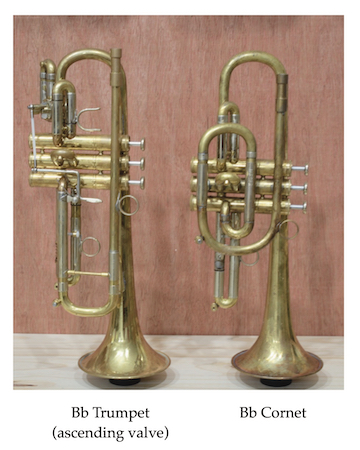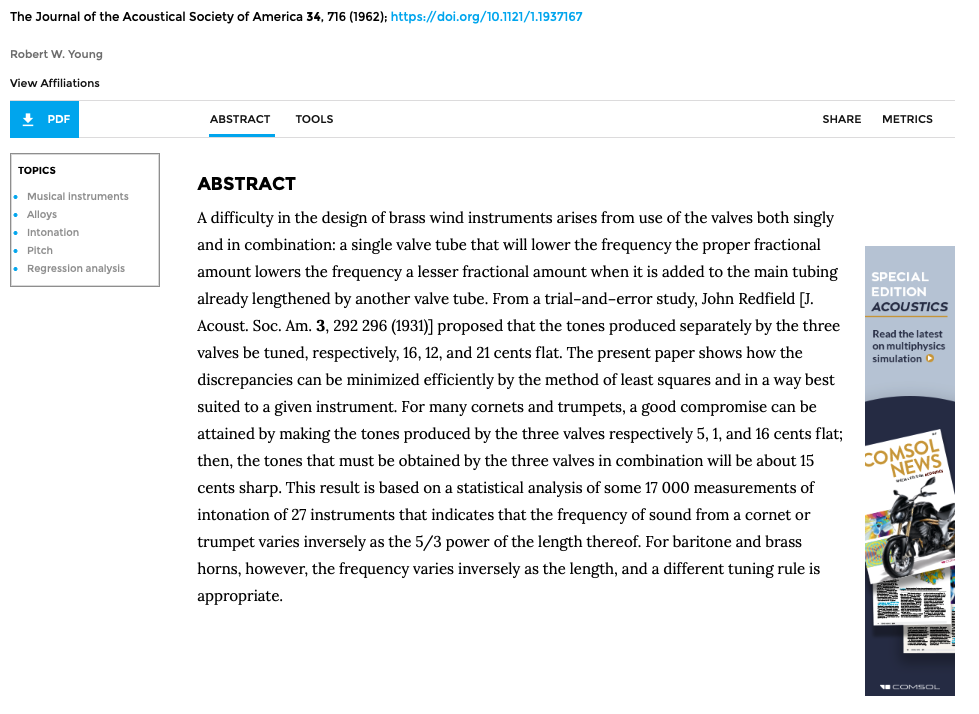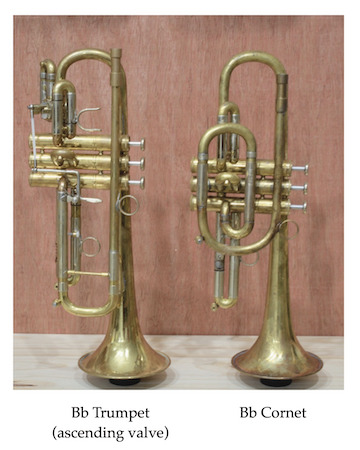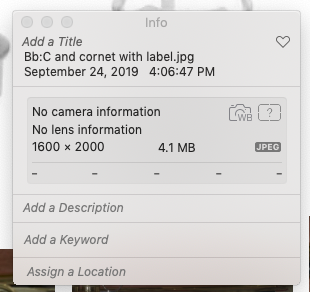I have expanded on this and posted a blog - http://www.jaegerbrass.com/Blo/Entries/2019/9/difference-between-cornet-and-trumpet.html
Here is the text What is the Difference between a cornet and a trumpet?
When I started playing the cornet in NZ in 1958, the brass band community was vehemently “anti professional”. If anyone was discovered to have been playing for money, in a dance band for instance, they would have their brass band association registration revoked, and would not be allowed to participate in such events as contests. Dance band at that time equalled trumpet, and playing the trumpet was regarded as heresy. Being terrified by these regulations, we young cornetists wondered what the difference actually was between cornets and trumpets. We were told that cornets are tapered and trumpets are cylindrical. This is the commonly accepted view, but, as I have observed, not correct.
Shorter?
The cornet looks to be shorter than the trumpet. It is not. Both instruments play the same pitch indicating that their lengths are the same. Yes the silhouette is shorter but the tubing lengths are identical. The cornet looks shorter because the tubing of a cornet is coiled into two complete turns whereas the trumpet has only one. We refer to this as the wrap. Anyone who has experimented with different shape main slides on their trumpet will have experienced the great effect that these different shapes can make. The cornet has two more half turns than the trumpet.

Conical vs Cylindrical?
Many think that the tubing of the cornet is conical whereas the trumpet is cylindrical. This is incorrect. Both instruments have roughly the same proportion of tapered to straight tubing as the accompanying graphic shows. Both the measured instruments have bores starting at around 0.335” at the mouthpiece entry, 0.459” though the valve section, and 4.8” at the bell.
The tapers of the lead pipes and bells of both these instruments are the same. I have been told that when French Besson were designing their trumpet they used the same bell mandrel to make the bell as they were using for their cornet. To this day Vincent Bach cornets are offered with #25, #31 or #37 bells which are some of the same bell shapes offered on their trumpets. When 19th century composers were calling for chromatic instruments, these parts went to the cornets because at that time trumpet players were insisting on keeping their valveless “Natural” trumpets. Maybe the straightening of the cornet by one turn to more closely approximate the silhouette of the natural trumpet helped in having these new chromatic trumpets accepted.
Valve Section Placement
The valve section of the cornet is two thirds down the length of the tubing whereas the trumpet valve section is halfway down its length (plus or minus a little bit). This positioning places the valve section (which is where the player holds the instrument) at the center of gravity so that the instrument balances in the hand.
Mouthpiece
The mouthpieces for both these instruments are quite different. The cornet, in its British Brass Band mode, requires a relatively deep V shaped cup, whereas the trumpet prefers a shallower bowl shaped cup.

Experiment
I built a cornet which has a receiver for a trumpet mouthpiece. It can be played with either a trumpet mouthpiece or a cornet mouthpiece (when used with an appropriate adapter). When I use a trumpet mouthpiece it sounds and feels like the cornet used in Jazz, and when I play it with a traditional cornet mouthpiece it responds suitably for British Brass Band. It is a cornet not a trumpet.
I also built a trumpet with an extra coil in its wrap but with the valves half way down its length, not two thirds down like a cornet. When played with a trumpet mouthpiece it is absolutely trumpet-like; when played with the same cornet piece as above it sounds mellow but does not feel like a cornet. It is a trumpet not a cornet.
Both of these instruments have the valve section at the balance point, the same distance from the player.
Conclusion
It appears that the essential differences between trumpet and cornet are:
Mouthpiece shape - bowl cup or V cup
Wrap - one complete turn or two.
Placement of the valves - half way along the tubing or two thirds.
The instrument with a cup mouthpiece, one complete turn, and valves half way along its length can play and feel like a trumpet.
The instrument with a V mouthpiece, two complete turns, and valves two thirds along its length can play and feel like a cornet.
Hopefully this information will help in unraveling the difference between these two instruments.





